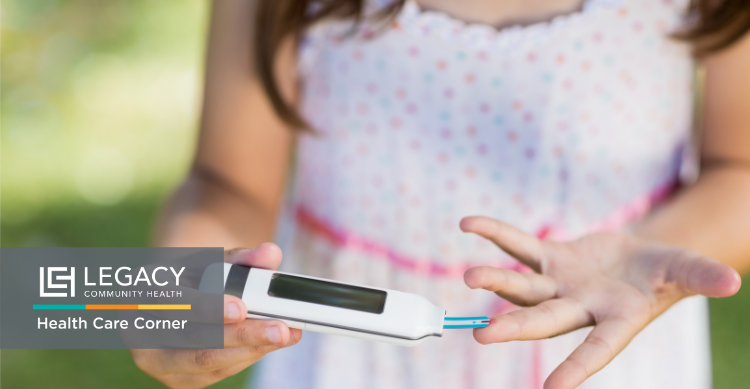By Dr. Iliana Solano, Medical Director of Pediatrics
The month of April is Defeat Diabetes Month. Diabetes rates in the United States are rising among children and teens. According to the U.S. Centers for Disease Control and Prevention (CDC), the rate of new cases of diabetes among people younger than 20 years of age increased between 2002 and 2015 with a 4.8 percent spike for type 2 diabetes and a 1.9 percent increase in type 1 diabetes.
Type 1 diabetes is more common in young people than type 2 diabetes. Previously called juvenile diabetes, type 1 diabetes in children occurs when the pancreas is unable to produce insulin. Without insulin, sugar cannot travel from the blood into the cells causing high blood sugar levels. People can develop type 1 diabetes at any age but the average age of diagnosis is 13. Type 1 diabetes is considered to be a chronic autoimmune disorder.
Until recently, young children and teens rarely developed type 2 diabetes, which used to be called adult-onset diabetes. Now, about one-third of American youth are overweight, a problem closely related to the increase in kids with type 2 diabetes. Over 75 percent of children with type 2 diabetes have a close relative who has it, either due to genetics or shared lifestyle habits.
The signs and symptoms of both type 1 and type 2 diabetes in children are similar. They can include:
- Increased thirst and/or hunger
- Frequent urination, possibly bed-wetting in a toilet-trained child
- Unintentional weight loss
- Fatigue
- Irritability or behavior changes
- Blurred vision
Children and teens who develop diabetes have a higher risk of health challenges throughout their lives. Though there is no cure for either type of diabetes, treatment—as well as lifestyle modifications for children with type 2 diabetes—can help control children’s blood sugar and improve their health. Schedule an appointment with your child’s Legacy Community Health provider if you notice any diabetes signs or symptoms. Visit our website or call 832-548-5000 for more information.

